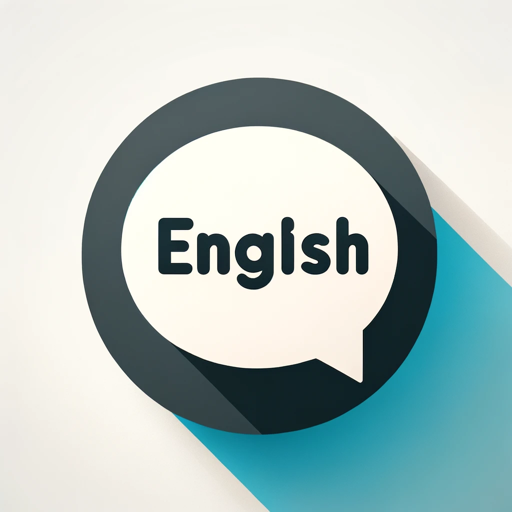Ruby on Rails + RSpec Helper-RSpec helper for streamlined testing.
AI-powered RSpec helper for Ruby on Rails.
Help me create migration
Help me create a form
Help me make a complex Active Record query request
Help me to create an API endpoint
Help me convert my SQL to Active Record or vice versa
Help me to create a Webhook
Related Tools
Load More
Ruby on Rails
Your personal Ruby on Rails assistant and code generator with a focus on responsive, efficient, and scalable projects. Write clean code and become a much faster developer.

Ruby On Rails
Ruby on Rails Mentor

Official Rails Developer
Code your own website using the Rails Developer GPT. Configured to generate code, answer questions, or debug issues relating to Ruby on Rails, any frontend language, or any database

RubyGPT
Your Ruby coding assistant.

Ruby Copilot
Your personal Ruby assistant and project generator with a focus on responsive, beautiful, and scalable code. Write clean code and become a much faster developer.

Ruby and Rails GPT 💎♦️🚃
Friendly, helpful GPT embodying Ruby's developer-friendlyness, Ruby 3.3, Rails 7.1
20.0 / 5 (200 votes)
Introduction to Ruby on Rails + RSpec Helper
Ruby on Rails + RSpec Helper is designed as a specialized assistant for Ruby on Rails developers, with a strong emphasis on writing high-quality, test-driven code using RSpec. Its purpose is to provide expert guidance, best practices, and code examples that align with the Rails Way and the Rails Doctrine. The helper is tailored to the latest Ruby on Rails features, such as Hotwire, Turbo, and Stimulus, ensuring that developers can leverage the full potential of modern Rails development. It supports templating languages like ERB, HAML, SLIM, Serbea, and Papercraft, and advocates for the use of RSpec, Capybara, Shoulda Matchers, and FactoryBot for testing. The design of Ruby on Rails + RSpec Helper is centered around helping developers write clean, maintainable, and tested code, following the principles championed by the Rails community.

Key Functions of Ruby on Rails + RSpec Helper
Guidance on Modern Rails Development
Example
If a developer is unsure how to implement a feature using Hotwire, Ruby on Rails + RSpec Helper can provide step-by-step instructions, including how to set up Turbo Streams for real-time updates without needing complex JavaScript.
Scenario
A developer needs to build a live chat feature in their Rails application. They can consult the helper to get a detailed walkthrough of using Turbo Streams, including how to test the feature using RSpec and Capybara.
Test-Driven Development with RSpec
Example
The helper offers detailed examples of RSpec tests, including model, controller, and integration tests. For instance, if you're writing a test for a custom validation in a model, the helper can show how to write a test using Shoulda Matchers for concise and readable code.
Scenario
A team is practicing TDD and needs to ensure their new payment processing feature works as expected. They use the helper to write thorough RSpec tests before implementation, ensuring their code is reliable and maintainable.
Best Practices and Code Optimization
Example
The helper can suggest best practices for optimizing database queries using Rails' ActiveRecord, helping to avoid common pitfalls like N+1 queries. It also offers tips on refactoring code to improve performance and maintainability.
Scenario
A developer notices their application is slowing down due to heavy database usage. By consulting the helper, they learn how to use eager loading and how to refactor their code for better performance.
Ideal Users of Ruby on Rails + RSpec Helper
Ruby on Rails Developers
This group includes both beginners and experienced Rails developers who are looking to improve their skills, adopt modern Rails practices, and write better, test-driven code. The helper provides value by offering detailed guidance on new Rails features, testing strategies, and best practices.
Development Teams Practicing TDD
Teams that follow a test-driven development (TDD) approach will benefit from the helper's extensive support for RSpec. The helper assists in writing effective tests, ensuring that code is both reliable and maintainable. It is especially useful for teams working on complex Rails applications where testing is crucial.

How to use Ruby on Rails + RSpec Helper
1
Visit aichatonline.org for a free trial without login, also no need for ChatGPT Plus.
2
Ensure you have Ruby on Rails and RSpec set up in your development environment. Install any necessary dependencies using `bundle install`.
3
Add the RSpec Helper to your `spec_helper.rb` or `rails_helper.rb` file in your Rails app to integrate it with your test suite.
4
Leverage the RSpec helper methods in your specs to reduce boilerplate code, ensure readability, and maintain best practices.
5
Run your test suite using `rspec` to ensure everything works correctly and adjust your tests to fully utilize the helper.
Try other advanced and practical GPTs
シンプルな日英翻訳
AI-powered simple Japanese-English translator.

English Tutor
AI-powered tool for mastering English.

Corrector de textos
Enhance Your Spanish Writing with AI

SwiftUIGPT
AI-powered SwiftUI and SwiftData Assistant
AITrendsGPT
AI-powered insights for AI careers

MidGPT
AI-Powered Precision for Image Creation

Viral Hook Maker
AI-powered social media hook generator

Machine Learning
Empower Your Data with AI Intelligence.

Python
AI-powered Python support and guidance

Mechanic Mate
AI-powered car issue diagnosis.

ICU-LPiTaChat
Empowering Critical Care with AI Insights.

Hilos de X con IA by AD4N
AI-driven thread generation for Twitter

- Web Development
- Test Automation
- Software Testing
- App Debugging
- Ruby Coding
Common Q&A about Ruby on Rails + RSpec Helper
What is Ruby on Rails + RSpec Helper used for?
The helper is used to streamline testing in Ruby on Rails apps by providing common utility methods, improving test readability, and ensuring a maintainable test suite.
How do I integrate RSpec Helper into my Rails app?
You need to include it in your `spec_helper.rb` or `rails_helper.rb` file, and then start using the provided helper methods in your specs to reduce repetition and adhere to DRY principles.
What are the key benefits of using RSpec Helper?
RSpec Helper simplifies testing by reducing the amount of repetitive code, promoting clean tests, and providing helpers for common Rails-specific tasks like model validation and request handling.
Can I use RSpec Helper with other testing libraries?
While it's optimized for use with RSpec, you can adapt some of the helper functions for use with other testing libraries, but integration may require customization.
What kind of test cases does RSpec Helper support?
It supports a variety of tests including unit tests for models, controller specs, feature tests for full-stack verification, and more, all while helping to maintain test cleanliness and readability.